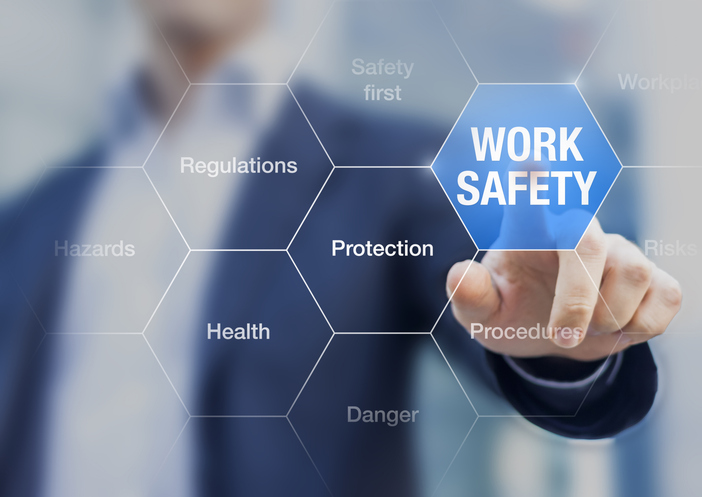The Impact of California Workplace Violence Prevention on Employee Well-being
The Impact of California Workplace Violence Prevention on Employee Well-being
Blog Article
Recognizing the Lawful Demands and Finest Practices for The Golden State Work Environment Physical Violence Avoidance for Companies
In the realm of California work environment safety and security, understanding the lawful needs and finest practices for stopping physical violence is extremely important for employers. As the characteristics of the contemporary work environment continue to advance, so do the prospective threats connected with work environment physical violence.
Legal Structure in California
These policies require employers to assess and address prospective work environment violence threats through the execution of thorough avoidance programs. Companies need to create and keep a created Workplace Violence Prevention Plan that includes treatments for assessing and identifying office physical violence risks, as well as methods for responding to and investigating incidents.
Furthermore, California Labor Code section 6400 mandates that employers offer a safe and healthful workplace for all employees. This consists of taking actions to stop workplace violence by carrying out safety and security actions, offering training on reacting and recognizing to potential hazards, and cultivating a society of open communication pertaining to safety and security concerns. Failure to conform with these lawful demands can cause fines and penalties for companies, underscoring the significance of prioritizing workplace violence prevention in The golden state.

Danger Assessment and Prevention Techniques
Structure upon the legal framework established in California for office physical violence prevention, the emphasis now shifts towards conducting extensive threat assessments and executing effective prevention strategies to protect workers. Risk analysis is a vital step in identifying potential resources of office physical violence, including inner conflicts, consumer disputes, or external hazards. Prevention techniques may include implementing clear workplace violence policies, supplying training on dispute resolution and de-escalation strategies, establishing reporting procedures for concerning behaviors, and improving physical protection actions.
Worker Training and Education
How can employers make sure a well-informed and ready labor force in the world of office violence prevention? Employee training and education and learning are vital in furnishing staff with the understanding and abilities necessary to determine, prevent, and react to possible acts of violence in the workplace. Training ought to include a range of topics, consisting of identifying warning indications of prospective violence, de-escalation strategies, reporting procedures, and exactly how to gain access to assistance sources.
Companies need to conduct regular training sessions that are customized to the certain demands and dangers of their office. It is necessary to engage employees at all degrees of the organization, from entry-level team to administration, to ensure detailed understanding and implementation of physical violence prevention methods. Training needs to be interactive, engaging workers in practical situations and offering them with the chance to exercise their feedback skills.
Additionally, companies need to regularly assess and upgrade their training programs to reflect any kind of adjustments in the workplace atmosphere or brand-new understandings into efficient physical violence prevention approaches. By spending in recurring education and learning and training, employers show their commitment to developing a safe and safe workplace for all staff members.
Reporting and Feedback Protocols
Efficient work environment physical violence avoidance pivots on the facility of clear and effective reporting and feedback protocols within organizations. Prompt coverage of any type of concerning behavior or cases is essential to stop rise and ensure the security of all employees. Companies should carry out uncomplicated reporting procedures that urge staff members to talk up without fear of retaliation. This includes offering numerous reporting channels such this post as hotlines, confidential coverage systems, or direct communication with managers or human resources.
Along with reporting protocols, companies have to have distinct action treatments in position. This includes promptly checking out reported cases, evaluating the degree of danger, and taking ideal action to address the scenario. Feedbacks may differ depending on the extent of the threat, ranging from dispute resolution techniques to entailing legislation enforcement if necessary. Normal training on these response procedures is necessary to guarantee all staff members are prepared to take care of potential physical violence in the office effectively.
Continuous Conformity and Evaluation
To make sure the effectiveness of coverage and feedback protocols in protecting against work environment physical violence, continuous conformity and evaluation systems must be established within organizations. On a regular basis assessing and upgrading treatments and plans connected to office violence avoidance is vital to resolve evolving hazards and ensure that employees are appropriately secured. This process entails performing periodic threat evaluations, reviewing the performance of existing avoidance procedures, and making any needed changes to enhance safety and security.
Companies need to likewise give regular training sessions to educate workers on recognizing indication of possible violence, reporting procedures, and ideal responses to harmful situations. Monitoring and assessing employee compliance with these methods is crucial to preserving a risk-free workplace.
Moreover, companies have to develop clear channels of interaction for employees to report any concerns regarding work environment physical violence anonymously and without worry of retaliation (california workplace violence prevention). Carrying out complete examinations into reported incidents and resolving them promptly and properly is vital in demonstrating a dedication to avoid workplace physical violence and cultivating a culture of safety and security and regard within the office
Final Thought
In conclusion, The golden state companies have to follow the legal structure for workplace violence prevention, conduct risk analyses, carry out prevention strategies, supply training and education to employees, develop reporting and feedback methods, and make sure ongoing conformity and assessment. By proactively addressing workplace violence, companies can produce a safe and protected workplace for their staff members and minimize possible risks. Compliance with these requirements is vital to promoting a society of safety and security and preventing cases of work environment violence.
As the characteristics of the modern workplace continue to develop, so do the possible risks associated with office violence. These policies call for companies to evaluate and resolve prospective work environment physical violence threats through the implementation of comprehensive avoidance programs. Companies need to develop and maintain check here a written Workplace Violence Avoidance Plan that includes procedures for identifying and reviewing office physical violence hazards, as well as methods for reacting to and exploring events.

In conclusion, The golden state companies have to stick to the lawful framework for office violence avoidance, conduct risk evaluations, implement prevention approaches, provide training and education and learning to employees, develop coverage and feedback procedures, and ensure Read Full Report ongoing compliance and examination.
Report this page